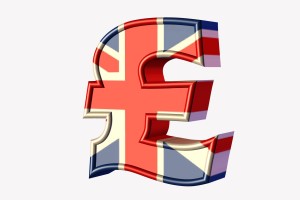The Definitive Guide to Paying Less Tax
Nobody likes paying tax but it is something almost all of us have to do. We would all like to pay a little less tax to the tax authorities but we often overlook simple ways of doing so. It doesn’t help that the UK tax rules are complicated but, fortunately, there are a variety of easy ways that you could reduce your annual tax bill. Whether you are an individual employee or a business owner, a pensioner or an investor, this guide to paying less tax contains something that could help you reduce your tax bill.
 Personal allowances and business allowances, if used carefully, can save you significant sums of money each year and they are all perfectly legal and acceptable ways to pay less tax and still comply with the tax laws and regulations. This is legal tax avoidance not tax evasion, which is illegal.
Personal allowances and business allowances, if used carefully, can save you significant sums of money each year and they are all perfectly legal and acceptable ways to pay less tax and still comply with the tax laws and regulations. This is legal tax avoidance not tax evasion, which is illegal.
GUIDE TO PAYING LESS TAX
Age-related Personal Allowances
TAX ISSUES FOR SMALL BUSINESSES
Research and Development Relief
PERSONAL TAX
Spouses & Partners
Investments
There are three different income tax brackets so if you have investments or savings and one spouse or civil partner pays a higher tax rate than the other, a simple way to reduce your combined tax bill is to transfer some investments to the lower earner. Be aware that this does mean that the higher earner would have to relinquish control over the investments so it does need some serious thought and require full trust between the two partners. Even if you only have a small amount of savings or investments the tax saved can mount up quickly.
Personal Allowance
If one partner has no income, or a low income below the personal tax-free allowance, they can transfer 10% of their personal allowance to their partner as long as the partner is not a higher rate tax-payer.
High Earners
High earners at a certain level of income will no longer receive a tax-free personal allowance but such high earners can retain this allowance by transferring savings or investments that produce an income to their spouse or civil partner to reduce their own annual income. Alternatively they can make contributions into their own pension to bring their annual income below the relevant threshold.
 Letting Residential Property
Letting Residential Property
Allowable Expenses
Certain expenses incurred when letting out a property are tax-deductible so make sure you are claiming for all of the following:
- Letting Agent’s fees
- Accountant’s fees
- Buildings and contents insurance
- Part of the interest payable on any loan taken out to purchase the property
- Maintenance and repairs but not improvements
- Utility bills such as gas, water and electricity
- Services included in the rent, for example the services of a gardener
The cost of furnishing a residential property is not tax-deductible in the UK, but there is an allowance for wear and tear on fixtures, fittings and furnishings so, again, make sure you claim this for items including:
- Soft furnishings such as sofas, armchairs, beds and mattresses
- Carpets and curtains
- White goods such as washing machines, tumble driers and dishwashers
Rental Losses
If you rent out a property but do not make a profit after allowable expenses then report those losses to HMRC because they can be set against possible future profits from the property in subsequent years and reduce your future tax liability.
Private Lettings Relief
If you let out a house or apartment that used to be your main home then you are entitled to tax relief on a portion of any gain when you sell the property. You just need to include this relief when you calculate the capital gain when you have sold the property. If you own it jointly with someone else then the current relief amount is doubled.
Holiday Lettings
A Furnished Holiday Let is treated differently for tax purposes than a regular rental property and is considered as a trade for tax purposes. This means that allowable expenses do include capital expenditure such as furniture. Other advantages include the way a holiday let is treated for tax purposes when it is sold. It is, therefore, possible to minimise your tax liability by ensuring that all allowable expenses are used and that tax allowances are claimed where possible.
Capital Gains
Everyone is entitled to a capital gains tax annual exempt amount so if your spouse or civil partner will not use their own allowance it is worth transferring some of your assets to them. Assets such as a property do not have to be transferred into a single name so could be held in joint names which would double the tax exempt amount but you would still retain some control over the assets. This is only possible between legal partners i.e. married couples or those in a civil partnership.
Anyone with a portfolio of investments generating a capital gain should consider selling some each year where the gain is below the current CGT exempt threshold. This way you can take tax free profit from your portfolio over a period of time. Clearly the timing of any sale is crucial for saving tax.
Capital Losses
If you have invested in a property or business that has fallen in value then those losses can be offset against any capital gains you have made from other investments. If you have not made any capital gains in the same year they can also be or carried forward until you do make a capital gain. However, you must declare the losses on your Tax Return within four years.
Interest on Savings
One of most obvious ways to reduce the amount of tax you pay if you are not a UK tax payer (i.e. a non-resident or someone with a tax exempt income) is to ensure you are not paying tax on your savings account interest. All interest in UK banks and building societies is paid with tax at the basic rate already deducted so you have to register with HMRC to have the interest paid tax free. However, this is a simple process that any bank or building society can help you with. This should also be done for any savings accounts your children hold.
ISAs
In the UK an Individual Savings Account (ISA) provides tax free interest on savings and investments up to a certain annual limit. Anyone can take advantage of an ISA, even without any experience or knowledge of investing as there is an option of a cash ISA in addition to stocks and shares ISAs (which also benefit from being free of capital gains tax). So make sure you use your full tax-free ISA allowance each year and remember to look at Junior ISAs for your children.
National Savings Certificates
Whilst they don’t typically provide particularly competitive interest rates, interest earned is tax-free so they can be useful for higher rate tax payers who would otherwise be paying the higher rate of tax on their interest.
Pay into a Pension
 Paying into a workplace pension, or increasing your current contributions, can help lower your tax liability because contributions are taken from your gross salary and, therefore, reduce the amount which is liable to income tax. They also, of course, are intended to provide for you in retirement.
Paying into a workplace pension, or increasing your current contributions, can help lower your tax liability because contributions are taken from your gross salary and, therefore, reduce the amount which is liable to income tax. They also, of course, are intended to provide for you in retirement.
Note that if you pay into a pension via a salary sacrifice scheme you can also reduce your National Insurance Contributions in addition to reducing your income tax.
Salary Sacrifice
If your employer offers a salary sacrifice scheme and you take advantage of non-cash benefits such as childcare costs, private healthcare insurance, subsistence allowance or gym membership, you could save tax on these benefits by enrolling in the salary sacrifice scheme.
Child Benefit
At one time all families were entitled to Child Benefit regardless of how much the household income was. But now it only takes one parent to earn more than £50,000 for Child Benefit to start being reduced and for any family where one parent ears more than £60,000 they are no longer entitled to any child benefit. If you are in this position try to use as salary sacrifice scheme or make additional payments into your pension to bring your gross income below the threshold.
Dividend Tax
The rules for paying tax on dividends that are not from investments held in ISAs or pensions changed in 2015 and there is now a £5,000 dividend allowance. This means that basic rate tax payers receiving more than £5,000 per year in dividends will now have to pay tax (at a rate of 7.5%) on the amount over the £5,000 threshold. For higher rate tax payers the amount of tax you pay will depend on individual circumstances.
So how can basic rate tax-payers avoid paying tax on dividend payments?
Firstly, if you are married or in a civil partnership share your investments equally between you to make use of each person’s £5,000 allowance. Also ensure you have used your annual ISA allowance for tax-free investments and use pension contributions too.
Age-related Personal Allowances
Currently anyone born before 6th April 1948 is entitled to a higher personal tax-free allowance and those born before 6th April 1938 are entitled to an even higher allowance. Note, however, that these allowances are gradually being phased out and from April 2016 there will just be a single tax-free allowance amount. However, while this allowance is still available the same strategies to maintain a full personal allowance apply in the same way as for the standard personal allowance.
Inheritance Tax
Anyone with assets worth more than the inheritance tax threshold, whether it’s just the family home or a range of investments, will be liable to pay a significant proportion of their inheritance to the tax authorities. For 2015/2016 inheritance tax is at a rate of 40% and the inheritance tax threshold is £325,000 – a level that includes many ordinary family homes, particularly in the South East.
Married couples and civil partners each have a £325,000 allowance so after the death of the first partner the allowance is transferred to the surviving partner. This effectively means no inheritance tax is due unless the assets amount to more than £650,000.
To avoid your beneficiaries having to pay 40% of their inheritance in tax you can:
- Set up tax-saving trusts.
- Give away assets that you don’t use (so not the family home) but this must be done at least 7 years before you die.
- Give annual gifts to your beneficiaries up to the value of £3,000.
Estate Planning
Employees earning more than £100,000 start to lose their personal allowance in increments until those earning £120,000 or more are entitled to no tax free income. If this applies to you then estate planning and trusts are likely to be needed to offset this loss of the tax-free allowance and manage your assets in a tax-efficient way. This is not straightforward and is beyond the topic of this guide.
Company Car
 If you are entitled to a company car you can make significant tax savings by considering carefully which model you choose. The carbon dioxide emission level of a company car determines the amount of tax you will have to pay, known as the car benefit charge, and this can vary by up to 30% depending on the car model. Certain cars with low carbon dioxide emission levels also allow some of the purchase cost to be offset against tax – so choose a company car wisely.
If you are entitled to a company car you can make significant tax savings by considering carefully which model you choose. The carbon dioxide emission level of a company car determines the amount of tax you will have to pay, known as the car benefit charge, and this can vary by up to 30% depending on the car model. Certain cars with low carbon dioxide emission levels also allow some of the purchase cost to be offset against tax – so choose a company car wisely.
Car Mileage Rates
It can often be financially advantageous to use your own car for business travel and claim a standard mileage rate from your employer using the authorised HMRC mileage rates rather than being taxed on a company car as a benefit. Each situation is different and depends on the business miles you travel but using your own car for business can be a way to save tax and be financially better off. Just make sure you keep a mileage log showing the business and private mileages.
The mileage rates do not cover the business proportion of the interest on a loan taken out to buy the car nor congestion charges but you can claim separately for these. You can also claim additional tax relief if you take a business colleague in your car with you on a business journey.
Company Mobile Phone
 Mobile phones are a tax-free benefit if the phone is provided by your employer and the contract is between your employer and the phone company. So if you use your own phone for work but your employer pays the bill you are losing out on tax relief because you will have to declare the phone on your P11D and will be taxed as having received a benefit.
Mobile phones are a tax-free benefit if the phone is provided by your employer and the contract is between your employer and the phone company. So if you use your own phone for work but your employer pays the bill you are losing out on tax relief because you will have to declare the phone on your P11D and will be taxed as having received a benefit.
Business Expenses
If, as an employee or a company director, you incur business expenses during the course of your job then it is important for minimising your tax liability that you complete a Tax Return each year. Otherwise you will not be able to claim tax relief for those expenses. Make sure you complete the downloadable form P87 and make any claims within 4 years of the end of the tax year in which they occurred.
Costs that you can claim for, and lower the amount of tax you owe, include the more obvious ones such as travel, accommodation and fuel costs but they also include the less obvious such as, protective clothing, tools, laundry (particularly if you are provided with a uniform and you are responsible for keeping it clean) and also some costs if you work from home.
Business Benefits
Some employee benefits create a tax liability; benefits such as fuel for private use or interest-free loans over a certain threshold and in some cases you may be financially better off not accepting such benefits so do your sums carefully.
Check your tax code
Another easy way to ensure you are not paying too much tax is to visit the HMRC website and check you have the right tax code. If you think your tax code may be incorrect then you can contact HMRC and request a tax assessment. If you think you might not be paying enough tax it is still better to get the code reviewed otherwise the amount you owe will simply build up.
Enterprise Investment Schemes
If you are a serious investor you could benefit from CGT and income tax relief by investing in a small company that is part of the Seed Enterprise Investment Scheme (SEIS) or the Enterprise Investment Scheme (EIS). Bear in mind that any shares in companies in these schemes must be held for a minimum of 3 years.
TAX ISSUES FOR SMALL BUSINESSES
All businesses want to minimise their tax liability by benefiting from all of the reliefs and exemptions that are available to them. This is even more true for smaller companies that are likely to have smaller budgets and where the difference in tax saved could be proportionally larger than for bigger companies.
Small business owners should make sure they claim every tax-deductible expense including: travel and accommodation, computers and other electronic equipment and utility costs if working from home.
Limited Company
If you run your own business there are many advantages to becoming a limited company. Although the basic rate of income tax is currently the same as the rate of corporation tax directors who pay themselves a salary at the basic rate and take the rest of their income as dividends can save on the cost of National Insurance Contributions because NICs do not have to be paid on dividends. And NICs are, in effect, another tax.
Capital Expenditure
If you own your own business and plan on buying new equipment that qualifies for capital allowances then the date on which any purchases are made can affect when you receive the tax relief. If you buy assets near the end of the businesses accounting year tax relief can be claimed almost immediately but if you buy near the beginning of the accounting period tax relief cannot be claimed for almost a year.
Capital Allowances
In most cases companies can benefit from 100 per cent allowances on the purchase of capital equipment such as plant and machinery and even on integral features of the business premises such as lifts or air-conditioning systems.
Note that sole traders with an annual income below a certain threshold can use a simpler system to offset the cost of purchasing equipment called cash basis.
VAT Cash Accounting Scheme
Businesses with a turnover less than a certain threshold can join a scheme that means they only have to pay Value-Added Tax (VAT) on invoices once the invoices have actually been paid. This can make a huge difference to smaller businesses, especially ones in which customers regularly pay late invoices.
VAT Flat Rate Scheme
The VAT flat rate scheme helps a small business to simplify their VAT arrangements and in some cases it can be financially advantageous if the VAT rate the business pays is less that the VAT rate it can charge its customers. There is a useful HMRC Guide on registering for VAT.
Working from home
There are tax savings to be had for the self-employed who work all or part of the time from home. They can claim for a proportion of household expenses dependent on the space used for working as a proportion of the whole house. Claimable expenses include Council Tax, insurance, heating, lighting, water rates, phone costs, internet costs and some repairs and maintenance.
Research and Development Relief
In a bid to encourage genuine innovation in the UK, businesses that have taken a risk developing a new product or service can claim back a significant proportion of their R&D expenditure.
Patent Box Relief
Is a business has patented products and are also liable for corporation tax the profits from any patented products may be taxed at a lower rate of corporation tax.
Employing your Family
It is also possible to employ your children once they reach 16, or other family members who earn below the personal allowance, to take advantage of their tax-free personal allowances.
A WORD OF WARNING
One of the easiest ways of saving tax is to make full use of all your available allowances. Actual allowance amounts change every year so below we have provided links to the current allowances on the HMRC website.
But remember that if you lower your taxable income in order to pay less tax this could potentially have a negative effect on, for instance, the amount of life cover you can obtain or the amount of mortgage you can secure. So always look at both the advantages and disadvantages of paying less tax – they may not always be obvious.
USEFUL HMRC LINKS
The HM Revenue & Customs (HMRC) website has details of all the current allowances, thresholds and reliefs available but it can sometimes be complicated navigating your way around their huge website. So here are some of the links that you may find most useful if you are looking to save tax, either as an individual or a small business.



